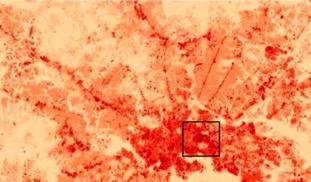Please wait...
About This Project
Many cities have proposed greening initiatives to offset local global warming, but these are difficult to measure and monitor. Cities are big compared to a thermometer, but small compared to satellite images–affordably measuring temperature is problem that is not well addressed with current technology. We propose to develop WeatherCubes, a set of affordable heat sensors, which we will use to measure the effectiveness of greening initiatives in Baltimore.
More Lab Notes From This Project

Browse Other Projects on Experiment
Related Projects
Worms at Work: Scoping Natural Carbon Sequestration at Scale
For centuries, scientists noted earthworms' exploits as ecosystem engineers. Recent research shows the feasibility...
Whales as oceanographers: Developing multi-sensor tags for improved understanding and management of critical habitats
Limited oceanographic data prevent accurate prediction of whale foraging hotspots. To address this, we will...
Communities perception and monitoring of ocean acidification in the Douala-Edea national park (Cameroon)
This project will help us to evaluate the vulnerability of clam fishing to ocean acidification (OA) in the...



